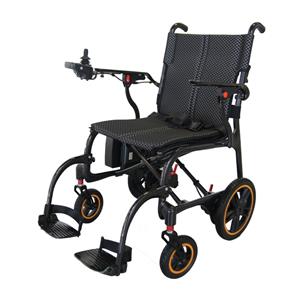Electric Wheelchairs: Technology Redefining Mobility and Setting New Standards for Accessible Living
As global aging intensifies and awareness of disability rights grows, electric wheelchairs have evolved from mere assistive devices into integrated solutions combining smart technology, ergonomic design, and social inclusivity. This article delves into the transformative value and future trajectory of electric wheelchairs, supported by industry data and technological advancements.

I. Technological Advancements: From Mechanical Mobility to Intelligent Travel
1. Core Performance Specifications
Power System: Brushless DC motors (power range: 150W–800W) deliver stable torque, enabling climbing capabilities of 8°–15° (high-end models like Permobil series support 20° inclines).
Battery Life: Lithium-ion batteries (mainstream capacity: 20Ah–50Ah) provide 20–50 km per charge. Fast-charging technology (e.g., Quantum Rehab’s Q6 Edge) reduces charging time to 3–4 hours.
Safety Features: Electromagnetic + mechanical dual braking systems, anti-tip algorithms (e.g., gyroscope-based dynamic balancing), LED lighting, and emergency alarms.
2. Smart Technology Breakthroughs
AI Navigation: High-end models integrate LiDAR and cameras for obstacle avoidance and route planning.
Human-Machine Interaction: Voice control , smartphone app monitoring (battery status, GPS tracking, diagnostics).
Health Monitoring: Built-in seat pressure sensors and heart rate modules to prevent pressure ulcers and relay health data.
II. Precision Applications: Innovation Driven by Segmented Needs
User-Specific Customization
User Group | Core Needs | Product Features |
Elderly Users | Ease of use, comfort | One-touch folding, adjustable lumbar/leg rests (DH01105) |
Spinal Injury Patients | Posture adjustment, pressure relief | Tilt/recline functions, air-cushion seats (DH01107) |
Outdoor Enthusiasts | All-terrain capability, endurance | rugged tires (DH01107) |
Urban Commuters | Portability, lightweight | Carbon fiber frames (as light as 13.5kg, DH01126) |
2. Scenario-Based Solutions
City Commuting: Slim designs (<65cm width) compatible with subway gates and elevators.
Medical Rehabilitation: Integration with gait-training robots .
Global Travel: FAA-certified removable batteries for air transport.
III. Market Trends: Global Growth Meets Technological Innovation
1. Data Insights
Market Size: The global electric wheelchair market reached $4.5 billion in 2023, with a CAGR of 7.2% (Grand View Research). China leads growth, accounting for over 30% of demand.
User Demographics: 58% are seniors (60+), 32% have spinal injuries/muscular dystrophy, and 10% are temporary users (e.g., post-surgery recovery).
2. Cutting-Edge Technologies
Brain-Computer Interface (BCI): Experimental models use EEG signals for navigation.
Modular Design: Customizable add-ons (e.g., lift seats, storage units, oxygen tank mounts).
Sharing Economy: Hourly rentals in airports/hospitals to improve accessibility.
IV. Challenges and Future: From Products to Ecosystems
1. Current Barriers:electric wheelchair
Cost: High-end smart models exceed 15,000,whilebudgetoptions(15,000,whilebudgetoptions(2,000–$5,000) lack advanced features.
Infrastructure: Inadequate urban accessibility (only 68% of Chinese Tier 1–2 cities meet standards).
Social Stigma: "Hidden discrimination" persists (e.g., malls restricting electric wheelchair access).
2. Future Directions:electric wheelchair
Policy-Driven Progress: Stronger accessibility laws (e.g., upgraded U.S. ADA Act mandating public charging stations).
Cross-Industry Collaboration: Automotive giants entering the field (e.g., Tesla’s patented omni-wheel design).
Community Integration: Apps mapping accessible routes (slopes, elevators, repair hubs).
Freedom Without Boundaries, Technology With Empathy
The evolution of electric wheelchairs embodies a technological revolution centered on dignity and equality. When a wheelchair can climb mountains, navigate subways, and connect to IoT networks, it transcends being a "disability aid" to redefine the boundaries of accessible living. With advancements in materials (e.g., lightweight magnesium alloys), energy storage (solid-state batteries), and AI, electric wheelchairs will continue erasing mobility barriers, ensuring everyone can explore the world with autonomy.





